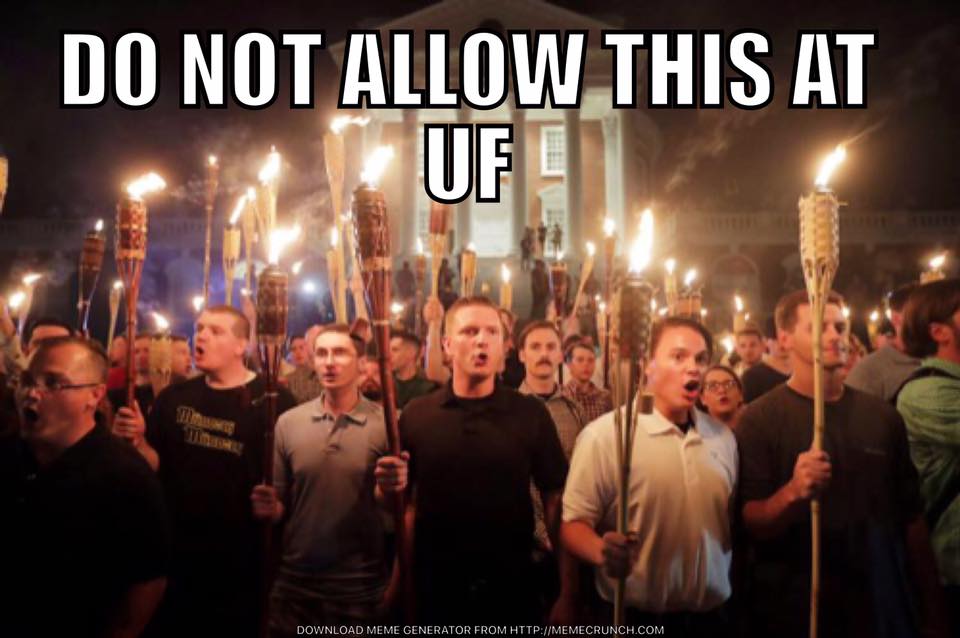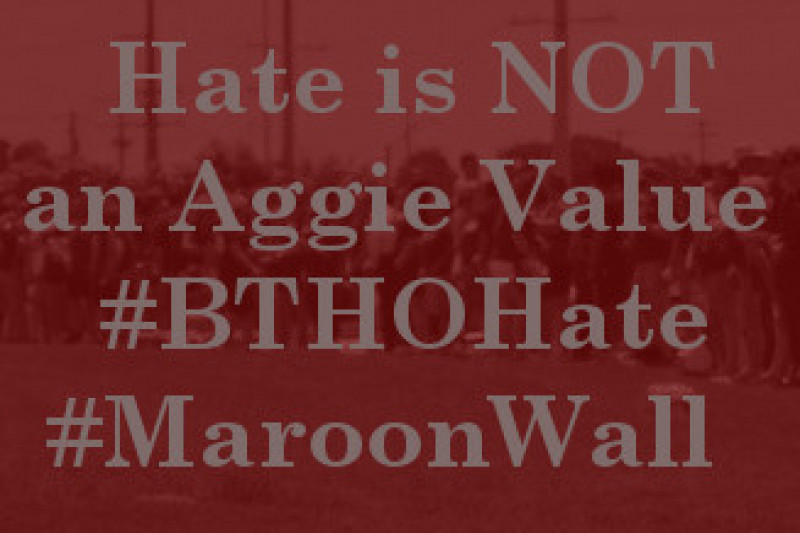You have /5 articles left.
Sign up for a free account or log in.
The events in Charlottesville this weekend have worried educators nationwide.
But they are not typical of how white supremacists are turning up on campus. The last academic year saw more of a visible white power movement on campus than ever before, according to the Anti-Defamation League and others. Much of the activity, however, came in the form of racist posters and leaflets that appeared on campuses, most of the time anonymously and without any link to a person on campus.
The last year also saw, however, a campaign by the National Policy Institute to hold events on campus -- and that effort may be picking up this fall. The institution describes itself as committed to promoting "the heritage, identity and future of people of European descent." The leader of the group, Richard Spencer, is known for "Hail Trump" rhetoric that prompts his supporters to respond with Nazi salutes.
Handling Richard Spencer Speeches
In November, Spencer announced that one of the targets for his efforts would be college campuses, and that he was planning an appearance at Texas A&M University in early December. To understand why so many people are upset about Spencer, consider these background reports from the Anti-Defamation League and the Southern Poverty Law Center, both of which note that he has called for the creation of a white state of America. He regularly includes references in his speeches that suggest his admiration for the Nazis. For instance, he says that most journalists are part of the Lügenpresse, a term the Nazis used to mean "lying press."
Charlottesville: Special Report
- The rally and its aftermath at UVA
- Patricia McGuire: American Tragedy Redux
- Robert O'Neil: Why Charlottesville?
- John Warner: Taking words at face value
- Tracy Mitrano: The continuing assault on higher ed
While many urged Texas A&M to block the visit, the university declined to do so, noting its obligations as a public university to uphold First Amendment protections of free speech. But the university condemned Spencer and his ideas and organized a series of alternate events -- for the time of his speech -- designed to promote unity at the institution. The backlash against Spencer was strong at Texas A&M, an institution with military roots and pride in the hundreds of students and alumni who died fighting the Nazis in World War II.
In April, Spencer spoke at Auburn University, giving a typically inflammatory speech that was answered at various points by audience members, but which went on as scheduled. Auburn had tried to block the event, saying that it would create unsafe conditions, but a federal judge ruled that Spencer had a First Amendment right to appear at the public institution.
Next up appears to be the University of Florida. On Saturday night, with the violence in Charlottesville fresh in people's minds, the university's president, Kent Fuchs, announced on Facebook that the university had been contacted by the National Policy Institute about arranging a Spencer speech on Sept. 12. Fuchs noted that university regulations permit its facilities to be rented, provided that groups cover rental fees and security costs. He said the university was working on a security plan.
"For many in our community, including myself, this speaker’s presence would be deeply disturbing. What we’ve watched happen in Charlottesville, Va., in the last 24 hours is deplorable. I again denounce all statements and symbols of hate," Fuchs said. "The University of Florida is a community of learners, educators and scholars. We encourage open and honest dialogue, and we strive to build an inclusive environment where hate is not welcome. While this speaker’s views do not align with our values as an institution, we must follow the law, upholding the First Amendment not to discriminate based on content and provide access to a public space."
As officials did at the University of Virginia, Fuchs urged students not to engage directly with visiting white supremacists. "Instead of allowing hateful speech to tear us down, I urge our campus community to join together, respect one another and promote positive speech, while allowing for differing opinions. These types of groups want media attention. I encourage our campus community to send a message of unity by not engaging with this group and giving them more media attention for their message of intolerance and hate," he said.
 So far, there are indications that some at Florida very much want to engage in protest if Spencer appears there. A Facebook group called No Nazis at UF has been created, with discussion about protest tactics (with some arguing for ignoring Spencer and others saying counterprotests are essential). The illustration for the Facebook group features a photo from the white nationalist march at the University of Virginia (at right).
So far, there are indications that some at Florida very much want to engage in protest if Spencer appears there. A Facebook group called No Nazis at UF has been created, with discussion about protest tactics (with some arguing for ignoring Spencer and others saying counterprotests are essential). The illustration for the Facebook group features a photo from the white nationalist march at the University of Virginia (at right).
Texas A&M is also expecting a "White Lives Matter" rally, organized by the same group that brought Spencer to campus, on Sept. 11.
 The Texas Tribune reported that Spencer will speak at the rally and that organizers issued a press release stating: “Today Charlottesville Tomorrow Texas A&M."
The Texas Tribune reported that Spencer will speak at the rally and that organizers issued a press release stating: “Today Charlottesville Tomorrow Texas A&M."
Students are already organizing a counterprotest, and a social media campaign under the hashtag @BTHOhate. ("BTHO" is part of a Texas A&M football cheer, meaning "Beat the hell outta" the opponent.) Plans posted by students to social media state, "The protest will take two forms. First, we plan on forming a Maroon Wall, a human barricade around the racist rally to block passersby from having to see it. Second, we plan to hold an adjacent protest to resist racism and commemorate the lives lost fighting fascism and intolerance."
Leaflets and Posters
Only a few campuses have hosted self-avowed white nationalists in the last year.
But a March report from the Anti-Defamation League said that there were 107 incidents of white supremacist activity on campuses during the 2016-17 academic year -- most commonly leaflets or posters from white nationalist groups, the report says. Of these incidents, 65 took place in the first months of 2017.
When Inside Higher Ed and others have reported on some of these incidents, various websites have said that these incidents are hoaxes or "fake news." The ADL said that the tally in the report is of verified incidents, sorted by location, and with photo documentation, campus reports and other evidence for each incident. In most cases, no one on campus claims responsibility for the posters, but they are an affront to black, Latino, immigrant, Muslim and Jewish students.
 In several cases, people have hacked college and university library printers so leaflets appear, leaving students to assume that the person next to them might be a white supremacist. The image at left was printed out at several college libraries, remotely through hacking.
In several cases, people have hacked college and university library printers so leaflets appear, leaving students to assume that the person next to them might be a white supremacist. The image at left was printed out at several college libraries, remotely through hacking.
Many other posters feature images from ancient Greek or Roman statues, calling on students to embrace a "European" heritage.
Reports of such posters have been less common during the summer, but just last week, the University of Utah started investigating reports on posters on campus, images of which circulated on social media (below). These posters blame crime on black people and feature a link to a website with the name "blood and soil," a Nazi slogan that was among the chants of the white nationalists who marched at the University of Virginia Friday night.




